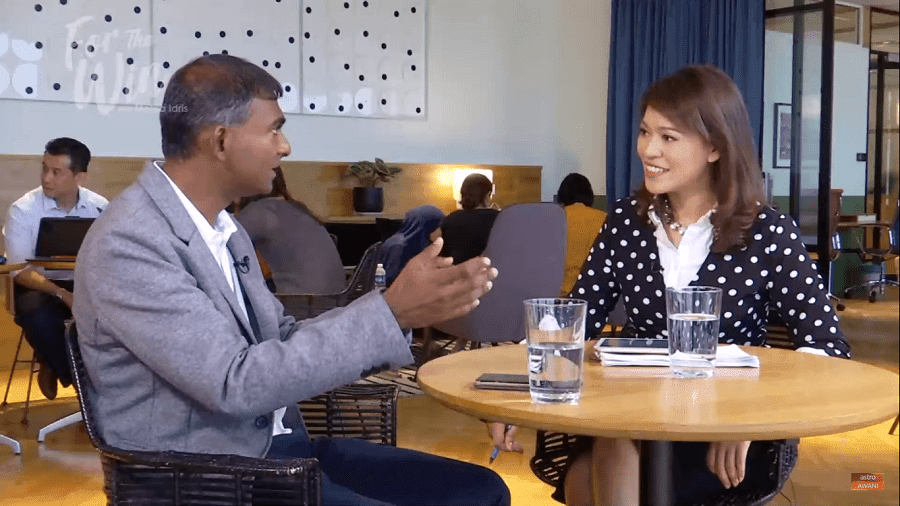Do You Know What Your People Are Really Feeling? The Cost of the Empathy Gap

Vector image is from freepik.com by @pch.vector
During the high-stress years of 2020 and 2021, for the most part, employees felt cared for by their boss. Emergencies have a way of softening us, and, as a necessary side effect, unlocking our shared humanity. But the warm fuzzies did not last, and by February 2022, many organisations had returned to their pre-pandemic levels of “felt caring,” when, according to Gallup, only 24% of workers said their boss had their best interests at heart.
Ignoring Emotional Realities
Maybe it’s because of a phenomenon I call the “empathy gap,” painfully demonstrated in this shocking, but by no means unique, example.
I was on the phone with a female middle manager who had lost a child while working for a huge company that often asked her to take meetings on the weekend. A few years after her child's passing, she chose to hold a Sunday event, a celebration of life, to honour her memories. And on that Sunday, in the morning, her boss insisted that she join a conference call, despite knowing the enormously emotional experience she would be facing just a few hours later.
Staggering.
Awful.
Show-me-the-door-level ignorance.
She left the company, of course. And they lost a fireball of talent.
This lack of caring is sadly ubiquitous, and its impact is felt around not only the emotional and personal needs of individuals but also the unrelenting pressures of modern work. No matter how much exhaustion, frustration, and being stretched thin become part of everyone’s job description, it seems that the upper levels of management often just don’t get it, or don’t believe it. And consequently, many days I find myself asking, “Why is it so hard for senior executives to feel what it’s like for their people?”
Imagined and Actual Truth
Think of the empathy gap as the space between what senior executives think is going on and what is really going on.
If you're a senior leader reading this, and you find the term “empathy gap” to be an affront, let me just say to you that everyone has empathy gaps. For example, line workers, managers, and mid-levels of leadership often have a gap in understanding senior leadership. They don't recognise the pressures of a quarterly shareholder call or, for a smaller company, the stress of making payroll. However, in my experience, the empathy gap has a greater cost for the staff than the top leaders.
Senior executives see the empathy gap as a small divide. They think, “Maybe I don't really understand the challenges of the people who work for me, but I'm probably pretty close.” HR generally sees the empathy gap as a larger opening that urgently needs to be addressed to create organisational changes. The rest of the company (i.e., the workers, staff, and managers) may see it as a chasm.
Read more: Why Empathy Makes For Stronger Organisations
Seven Ways to Address the Empathy Gap
If you’re a senior executive asking yourself, “Do I have an empathy gap?” I will first commend you for your teachability and openness. From there, I can suggest several ways to further break open your perspective and tune into what’s really going on in your team and organisation (as well as a bonus one for everyone who is not you.)
1. Set aside your defensiveness.
Let go of being offended by the inference that you may have work to do on your level of employee empathy. Try to get curious and neutral, like an anthropologist, to see what you can uncover and how it can make your company stronger.
2. Go talk to people.
Ask probing questions, not of your direct reports, but of their direct reports’ direct reports. Go down, down into the organisation. Ask the new, the young, and others with less authority one simple question: “How does it feel to work here?”
3. Reduce the power distance.
If you want any level of honesty in your conversations above, you will need to first reduce what Professor Geert Hofstede called the “power distance,” which is the status space between you and the other person. Power distance is why we defer, lie to, or omit information from people with seniority, which can lead to very stilted or guarded communication. Try to share something true and somewhat vulnerable about yourself to lead within these conversations (i.e., “It’s been coming to my attention that I may not have the most accurate grasp of your experience here,” or, “For a very long time I have been sure I knew what was true in the experience of working here, but I think I may need some help getting current”).
4. Humanise your surveys.
Likely, if you go back and look at the language of your most recent surveys on engagement or morale, it’s probably quite thin in terms of humanness. The questions organisations ask tend to be very neutral and, well, very corporate. They focus on getting the information needed, not providing an emotional unlocking for employees. Instead, embolden survey takers by stressing the anonymity of their responses, and dare them to share empathy-increasing truths with you with questions like the following:
- Do you find yourself complaining a lot about work when you are at home?
- What’s the hardest thing about working here?
- If your best friend had more than one option, would you encourage them to take a job here?
- What are the challenges you feel you can’t tell your boss about?
- How would you rate your level of exhaustion and burnout in the last three years?
5. Let HR really tell you what they think.
Your HR leaders are probably used to filtering feedback for you. They try to find a balance between what they think you want to hear and what you need to hear. But privately, HR teams are acutely aware of the weariness and waste that afflict the teams you work for. So, open your mind, set your defensiveness aside, close the power distance, and then say, “I'm ready. I’m ready to hear the full scope of your perspective.”
6. Commit to believing what you hear.
It’s so easy to push aside the feedback of others, but I encourage you to come with a beginner’s mind to each of these conversations. Say (and repeat) to yourself, “By taking in this feedback without defensiveness or rationalisation, I can make my company and leadership stronger.”
7. Connect the misery to the money.
Some of you may not be as worried about your own empathy gap (though do test yourself with the steps above). However, you need to understand how to manage the empathy gap of someone above or across from you. If that’s your situation, keep this mantra in mind: Connect misery to money. Making a business case for whatever you wish were different will help you get the attention of people focused on that side of the business.
The subtle traps of the empathy gap are everywhere: failing to see the perspective of your teen, walking numbly by the homeless person on your corner, and even in the everyday disconnects of a typical marriage. But when we choose to get brave and direct about combatting the empathy gap at work, we are primed to create a marvelous ripple effect of change outward and downward, helping both the people and future of our organisations.
This article was also published on Juliet Funt's LinkedIn.
This article is also available in Chinese.
Edited by: Kiran Tuljaram
Leadership
Tags: Empathy, HR, Emotional Intelligence, Communication, Stress & Trauma





